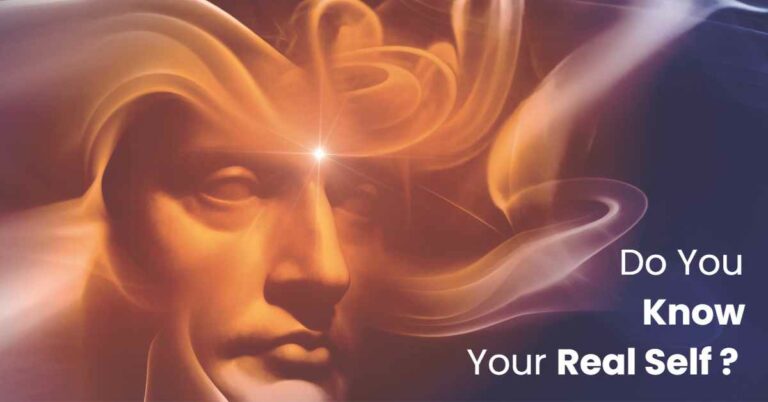
Do you know your real self ? A dissertation on the Self & Consciousness from the view-point of Science, Spirituality, Philosophy, Psychology, Yoga, Religions &
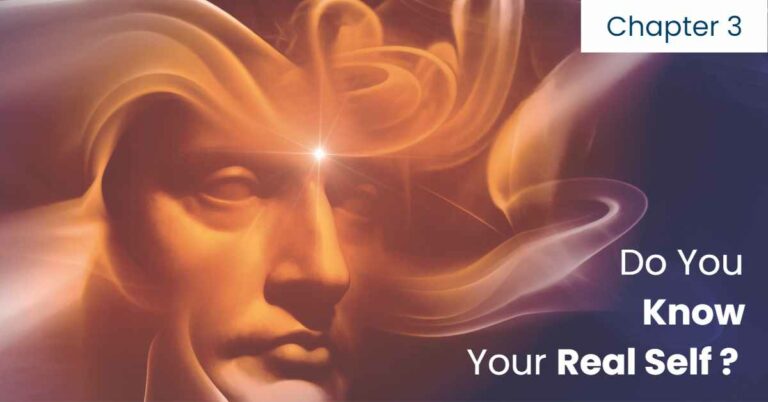
In this paper, the term ‘Spiritual’ or ‘Spirituality’ does not refer to any particular religion nor does it refer to any religious rituals. It simply refers to one’s rational belief in one’s own identity as a metaphysical self which is basically different in nature from the body, including the brain, and from Matter and from all its forms. And, since one’s belief influences one’s mindset, the term refers to one’s outlook, attitudes, values, preferences, priorities, life-style, relationships, memory-content and behaviour, all based on the belief in the metaphysical self. The term ‘Spirituality’ refers also to a simple spiritual practice, such as silent Meditation which is based on the afore-said belief and which strengthens one’s moral sense, restores one’s inner harmony and equipoise, reforms and improves one’s outlook and attitudes and also gives relaxing, uplifting, enriching and ecstatic supersensuous or extrasensory experiences.
Consciousness from the perspective of Raj-Yoga Meditation Since practicals, done under specified conditions, prove a theory and give validity to, or, credibility in, a model, let us discuss Consciousness, first, from the perspective of Raj-Yoga Meditation which is like a Science-practical and has been tested by medical researchers, clinicians, psychologists, psychiatrists and health scientists.
Raj-Yoga Meditation is a profoundly deep subject which opens to us many deep vistas of our mind and lays bare before us vast reservoirs of happiness and bliss which, hitherto, lay hidden from our view. Here, let us consider only one very elementary and rudimentary aspect of its practice.
When a person is introduced to the practice of Raj-Yoga Meditation, he occupies his mind with the thoughts: “I am a soul; a point of consciousness; a Being-of-Light. My original nature is of love, piety and peace. I am a point of self-aware light and spiritual energy. I am an eternal being, a child of God Who also is an Incorporeal Being-of-Light and is Knowledgeful and All-Peace, All-Bliss, All-Love and also Kind, Compassionate and Loving…”
The practitioner has the above thoughts to the exclusion of all other thoughts, such as the thoughts relating to his body, friends, relatives, profession and whatever else there is in this gross, material or physical world. He has heightened awareness of only spiritual or metaphysical identity and, in this awareness, is the imagery of an infinitesimal Point-of-Light, having an aura, for the self is like that.
In this practice, he also turns his attention to God Who is the Supreme among all souls and is the Incorporeal Being-of-Light Who loves all.
When one fixes one’s mind in this mental affirmation, one feels that one is at a better level of consciousness. One experiences calmness and quietude and has an exhilarating feeling of lightness. One has also the feeling of enhancement or activation of one’s spiritual and moral power. When one rises from this easy Samãdhi, or stage of stability and tranquillity, one feels a great inner upsurge of self-confidence, enthusiasm, noble thoughts and benevolence. One feels drawn to this experience again and again and has an inspiration to live it, to be immersed in it and to be it. There being a qualitative difference between what one used to experience in one’s day-to-day life earlier and this higher meditational experience and its spill-over, influencing the rest of the day, one hears an inner voice from the deep silence, saying to him: “Well, this is life; this is the real thing; this is extremely valuable. Why did I overlook this earlier? Wasn’t it a lapse on my part or mere misfortune to miss it? At least let me resolve now not to miss it in future….” Then one goes again and again into this experience of peace and bliss. When one goes into one’s daily routine, after some experience of this Meditation, with a natural smile on one’s face, love in one’s eyes and sincerity in one’s mind, people feel a subtle change in this practitioner, for he is now more loving, more co-operative, more honest, more sincere and more efficient. He has now certain abiding principles and has a spirit of service. He has goodwill for all. Jealousy, Anger, Greed and Wasteful and Negative Thinking are reduced in intensity, longevity and range and the mood is better and stable, and the level of anxiety, fear and tension has come down if at all it is still there. If the person had some criminal tendencies before, their grip on his mind has at least been loosened. If the practitioner had the habits of smoking, drinking or drug-abuse, he has now developed a distaste in these and his will has strengthened so that he now feels a strong urge to give these up and has regained the confidence to do it. He finds that this practice has made him a better person spiritually, morally, socially, politically and in other respects. Those who come in contact with him, observe this influence of Meditation on him gradually or quickly taking place. So, this experiment has scientific verification and its results have confirmation in the laboratory of life provided one practises it properly as one maintains laboratory-conditions while performing scientific experiments. This is an experiment in the Laboratory of the Mind Gendanken as Einstein would have called it in German.
But there is yet another side to this experiment. Perhaps, this can be tested with some scientific devices too. Change in behaviour, life-style, spiritual experience, etc. may be hard to measure with a scientific instrument but this other aspect of Meditation has been quantitatively and qualitatively measured by using appropriate scientific scales.
As has been reported in books and periodicals during the last about forty years or so, and is a demonstrable truth, Meditation has a very positive influence on our psychophysical system.
The brain-wave, the blood pressure, the muscle-tone, the blood-lactate, the heart-beat, the breathing rate, etc., of a person in Meditation indicate that he is in a relaxed state of mind. In fact, Meditation influences every cell of the body in a positive way and gives better immunity. It helps manage or cure many psychosomatic diseases. It liberates the mind from tension and increases clarity of thought, efficiency, and power of judgement. It places one’s relationship with others on a morally sound basis and takes a person out of negativity and morbidity and vicious circles of various sorts — both in the physical and the mental world.
Scientific proof : Demonstrable and repeatable results So, this scientifically, attitudinally and behaviourally tested practice shows that, while in Meditation, a person is in harmony with himself and with his body, and this influence manifests in the form of harmony with other living beings and with Nature and Environment. In other words, it proves that this is our ‘natural state of being.’ This experience lasts not merely as long as one is in Meditation but rather, it extends to some period beyond the duration of practice so that one constantly has, during this period, the feeling which may be expressed in these words: “Well, this is me — the real me. I feel light and free. This is the life worth living. This is good. Oh, fine; Really fine; Very nice!”
Now let us see, in retrospect, what were the essential constituents of the awareness or the mental affirmation during Raj-Yoga Meditation. It had the element of non-physical self-identity, for the practitioner said to himself, “I am a metaphysical point of Light”. It had the moral ingredients as well, for it affirmed that the self, in its original nature, is pure or pious. It had the emotional content, for it said that love is the original nature of the self. It had also the experiential aspect, for it mentioned peace. It also referred to the relationship of the self with God, thus putting relationship on a much higher pedestal and on non-physical basis. Moreover, it also drew attention to the values of kindness and compassion while being aware of God who has these attributes. And, basically, the affirmation itself was Thought, Awareness and Attention. Or, it was an activated Belief or a realisation of truth. Now, let us ask ourselves whether moral values, emotions, experience of solace and inner peace, and realisation of Truth, are made up of Matter or its various forms of energy?
Can these be synthesised in a laboratory from any material ingredients? Can these be explained in terms of Chemistry, Physics or Biology? When there are no external stimuli and it is only self-awareness of a metaphysical kind (for it excludes all thoughts of Matter and the material world) and this special kind of awareness results in harmony, satisfaction, sense of attainment and pleasant feeling from a non-physical source or event, or a joy of supersensuous kind, would it not be proper to conclude that the subject is a non-physical or a non-material, i.e. a spiritual being? If these non-physical noumena are the stuff of which the self is made, or if these are the elements of which the self is ‘constituted’, would it not be reasonable to conclude that the self is non-physical?
If greater and greater degree of identification with the body, matter or its forms results in more and more disequilibrium and disharmony, wouldn’t it be natural to conclude that the nature of the self is non-material and metaphysical? If nothing in the material world, including the world of electro-magnetic fields, subatomic quanta, computers and robots, has ‘experience’, ‘emotions’ or ‘self-awareness’ as its core, wouldn’t it be wrong to consider the self as an epiphenomenon of brain or matter? If we do not have any model as yet in Physics, Chemistry or Biology and in the matter-of-fact or the imaginary world, wouldn’t it be better to accept this common-sense view, which is experientially verifiable and scientifically testable, that the self is a spiritual being?
Especially when we have evidence from the investigated and verified cases of re-incarnation, scientifically collected and examined case-histories of Out-of-Body Experiences (OBE), Near-Death Experiences (NDE), and hypnotically age-regressed cases to support the truth that the self survives the physical death, and we have the paranormal and extrasensory experiences also that support this view, would it be wrong even then to think that the self is non-physical and that it is not an emergent phenomenon of the brain?
Many clinical tests have shown that though limbic system and hippocampus are associated with our emotions, yet these are the brain-parts used for exteriorisation or manifestation only; these are not the experiencer. Researchers have been able to evoke emotional responses by applying electrodes, etc. to these parts of the brain but the subject did not feel anger or such other emotions. Only physical manifestation of pseudo-anger could be elicited while the subject himself laughed and felt amused at the happening.
With all the evidence available, it seems that it would be reasonable to conclude that the field of the non-physical self has its contact with the subtle field of the physical quanta in the sub-cortical region of the brain at and around the hypothalamus, thalamus, limbic system, hippocampus and the brainstem or what some researchers have called: the psychotropic region. It is now well-known that this region acts as a link between the psyche (Mind) and the soma (Body). It is now being increasingly realised that human consciousness is a composite entity, so to say which is homogeneously inclusive of (1) general awareness, (2) emotional experience, (3) analytical consciousness and (4) ‘awareness of awareness’ or awareness of all these abilities and that all these four are, in one way or the other, linked as a field to the field formed by hypothalamus, limbic system, hippocampus and brainstem, and the emotional elements were attributed to the limbic system, memory to hippocampus, and incisive consciousness or logical and abstract thinking to the cortical region, but now it is known that all these also are linked to Hypothalamus which controls, through the pituitary (the Master Gland), all the endocrine glands and also the autonomic nervous system and the homeostatic functions.
If even now someone says that the self or the Consciousness is an emergent phenomenon of the brain and that our thoughts, like the energy quanta at the subatomic level, form a field, one would have to answer the following questions:
(1) How do emotions, experience and the moral sense emerge from the brain or any other physical base and what, in the first instance, does make it a plausible thesis that these nonphysical noumena arise from the physical phenomena?
(2) Do we have any mathematical equations, physical laws or chemical formulas that can explain Emotions, Experience of Love and Joy or Moral tendencies?
(3) If the thoughts are like quantum phenomena or if they have emerged from the brain, what form should our Meditation or Yoga take? What should our Affirmation now be? Should it be: “I am a quantum phenomenon, I am a jumble of dancing particles…?”
(4) Does the hypothesis or the theory that Consciousness is a quantum phenomena or has emerged from the brain, explain the extrasensory perceptions, the paranormal phenomena and the parapsychological and emotional experiences?
(5) Does the model, based on the hypothesis that Consciousness has emerged from the brain or the brain-body combine, explain what is the goal of life or what meaning life has and what is the place of man in the scheme of things or in the drama of life?
(6) Has Meditation, based on the belief that Thoughts and Emotions are quantum phenomena’ been ever tested by someone? If they have been tested, what result on the body and mind have they produced?
If the answers to the above questions do not provide us with a better model and better results, then it would be more scientific to continue to have faith in the truth that Consciousness is a nonphysical, non-emergent entity.
Further, we find that human existence has a network of relationships. At present, these relationships are based on various kinds of identities. Man, to-day, identifies himself with his body, family, language, country, race, community and so on. All these multifarious identities exert their pulls on him and each one of these demands loyalty. Not only does this result in confusion and conflict in man’s own mind and give him moments of trauma and torment but it works as a great disintegrating factor: The relationships built on these identities that derive their legitimacy from the association of Consciousness with that which itself owes its existence to something material, has not been able to lead society to a system where there is abiding peace, wholesome harmony and lasting amity. It has not uplifted man from narrow considerations, it has tied man into many knots — one upon the other. It has not liberated his mind and given him a wide horizon of thinking, into which all directions can merge but, on the other hand, it has built many walls of separation which put artificial limits on his love and conscience and do not let his spirit free so that it could fly with freedom.
Now compare this with the understanding that the self or the Consciousness is a non-physical entity and that its relationship with all other human beings is of brother souls since all are immortal children of God. It will be found that one feels that the blinkers or hoods of ignorance have been removed, all kinds of fanaticism have fled away, narrow-mindedness has gone and one feels that one belongs to the whole family of humankind. Even though one knows one’s nationality and language, etc., yet one now has the knowledge that integrates and prevents an explosion or implosion of society into innumerable bits. This concept and feeling of world-brotherhood is the only uniting force that can harmonise the society into one whole and generate genuine concern for each other and stop human energy from being frittered away on perpetrating violence and many other kinds of mad frenzy.
“Is there”, one may ask, “any other sound and matter-of-fact basis for our society to have a feeling of universal love and goodwill and mutual concern? How can any theory, that is built on the hypothesis that the self has emerged from Matter at some stage, give a sound pedestal to human relationships?” The world can never become a good place to live in nor can our society be a better one without love which is the sap or the blood and the essence of life, and there can be no lasting love without this spiritual root. The tears of the poor cannot be wiped dry nor can the agony of the deprived millions be extinguished nor can the diseased, the weak and the aged be looked after well if our attitude is not humane and the reservoir of love has become dry. But which other social model, except the one based on spiritual relation of world-brotherhood, can infuse a spirit of love? This question of relationships is very crucial and the answer provided by the belief in a metaphysical soul has the strength enough to demolish all other hypothetical foundations for human relationships.
One should realise that all our political and economic systems, all talk of Human Rights and Rule of Law have a bearing on human relationships. All history also is connected, in some way, with human relationships.
So, life as it is, cannot be understood except in the context of relationships. And, relationships cannot have a sound and valid base without considering the self as metaphysical, i.e. spiritual.
After all, knowledge is for life, for joy, for happiness, for elimination of pain and for problem-solving; So, whenever we have a bit of new information or a new theory, we should test it with this touch- stone. We should examine it from this point of view and see whether it will help build a better society and a better world order. We should see whether it will promote values and better relations and happiness or it will lead to a worse situation and will unleash forces of disintegration and immorality?
If we find that this belief in a metaphysical self passes this test, or would pass this test better than any other current concept, belief or theory, then it is better to hold it at bay at least as long as we do not have a better concept.
Further, we should see whether the theory would equip us with such knowledge and build such attitudes as would enable us to face various difficult situations and problems in a better way.
For example, we should ponder whether it would bring peace and tranquillity to our mind or it would result in emotional turmoil or instability, wavering moods, floundering will and collapse of Values in face of tests.
It has been found to one’s tremendous advantage, on the basis of continuous experience, under many testing situations, that Raj-Yoga Meditation, practised sincerely, brings God’s guidance and help which has immense value. One can relate many experiences, from one’s own life, of such events in which God, the Best Friend or Best Guide, Himself blessed the practitioner with love and care and revealed the solution to a tricky situation or a hard problem.
Also, the practice of Raj-Yoga Meditation enables a person to be so loving and co-operative that his colleagues and kin, or friends and relatives, bless him for his pleasing and helpful manners, and even his professed adversaries, later, change their stance and attitude into one of co-operation and help.
Thus, we find that not only is the belief in metaphysical nature of Consciousness based on truth but it promotes moral values and better relations and a better world order and equips a person with such attitudes and knowledge as enables him to have better mind-set and to come out better in face of difficult situations.
Some scientists raise a valid question. They say that, since so many bits of information come to our brain through our senses every instant, the situation in our brain is comparable to a chaos or a catastrophe and there can be many probabilities as to the final outcome. So, the question is: how, in such a situation, do we have a unified mind? They suggest that, since our mental states are abrupt and are events at micro-level and are unpredictable, so the Catastrophe Theory would apply to this situation of quantum phenomena. They consider thoughts like quanta. But if we consider that, in this situation, there is a metaphysical energy particle in the brain which has a particular background and outlook and attitudes and that forms the point of reference, then, perhaps, we could appreciate that it is this self-conscious particle that determines the final result in the form of a particular decision, etc.
Another question generally is from the point of view of split-brain and split personality phenomena. In these cases also, if we think that it is the metaphysical self which uses, sometimes, one, and, sometimes, the other hemisphere or that this metaphysical self, sometimes, expresses one emotion and, sometimes another, then we will be able to appreciate better that this thesis about the metaphysical self answers such questions, better than any other theory.
One point that supports our explanation of ‘split thought’ is that two opposite thoughts do not occur at the same moment nor two opposing emotions or experiences manifest at the same instant.
In the light of the above, it seems fairly valid to believe in soul as a metaphysical particle that is self-conscious and is related to all other humans as a brother and has, therefore, some responsibility for the well being of all for observing some essential ethical values.

Do you know your real self ? A dissertation on the Self & Consciousness from the view-point of Science, Spirituality, Philosophy, Psychology, Yoga, Religions &
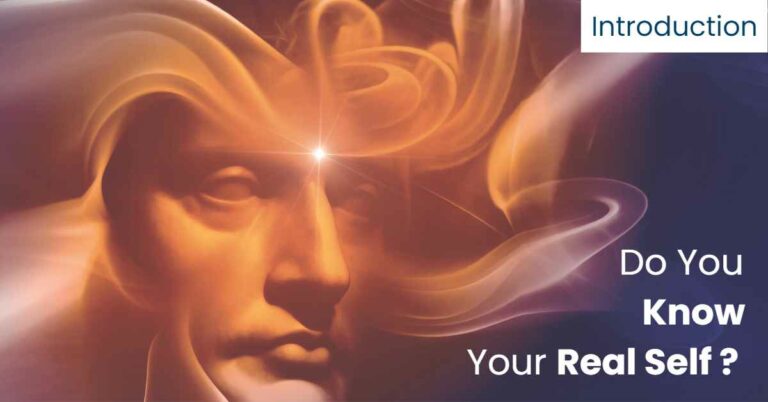
Knowing the Conscious and the Unconscious Consciousness is believed by all as the substratum of all human actions. Man’s thoughts, understanding, judgement, perceptions, learning, feelings,
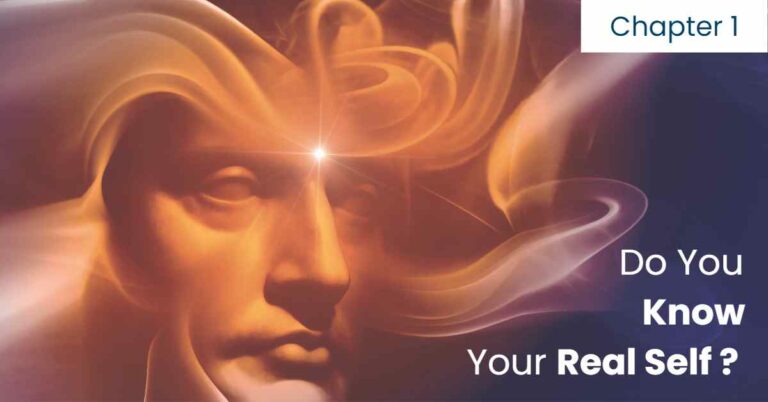
Chapter 1 The nature and identity of the self in the light of Common Logic & Indian Philosophy “Do you know your real self ?
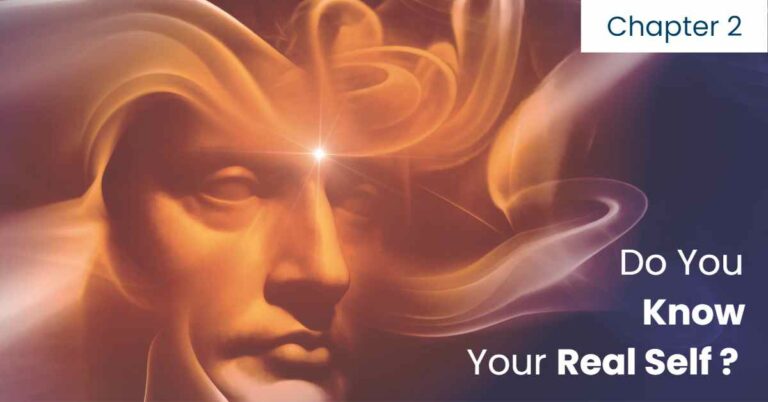
Chapter 2 Consciousness in the light of the views of some other philosophers Earlier, we have had a brief overview of some systems of Indian

Chapter 3 Consciousness from the Spirituo-Scientific Perspective of Rajyoga In this paper, the term ‘Spiritual’ or ‘Spirituality’ does not refer to any particular religion nor
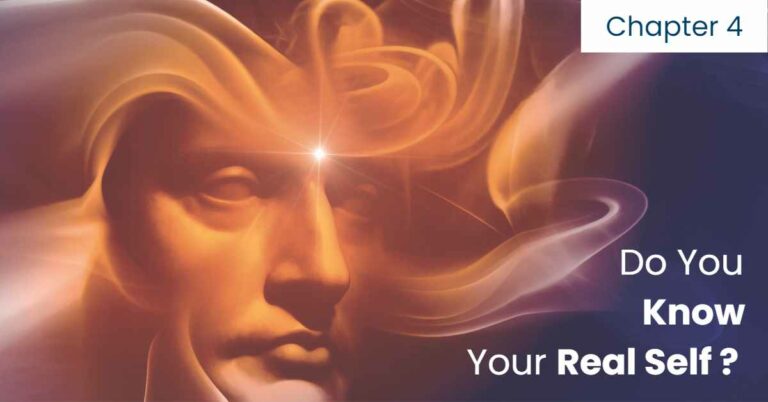
Chapter 4 Consciousness from a Religio-Spiritual Perspective (A part of author’s Paper-II, presented at the International Conference on Science and Consciousness) Before Science came on
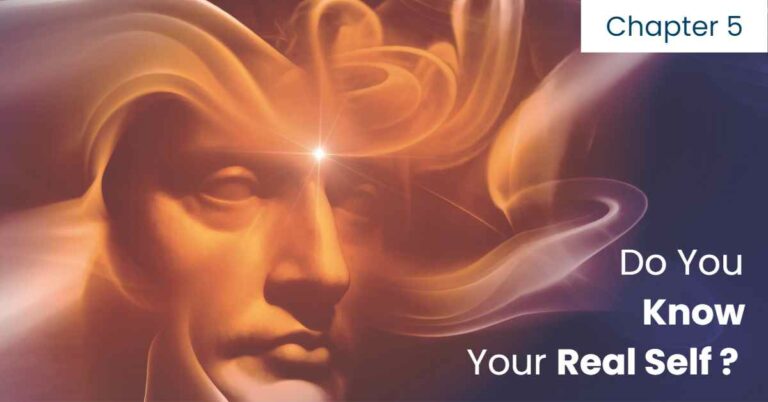
Chapter 5 Consciousness or Self From the Perspective of various Sciences and Spirituality If we think deeply on the nature of Thought, Emotions, Will, etc.,we
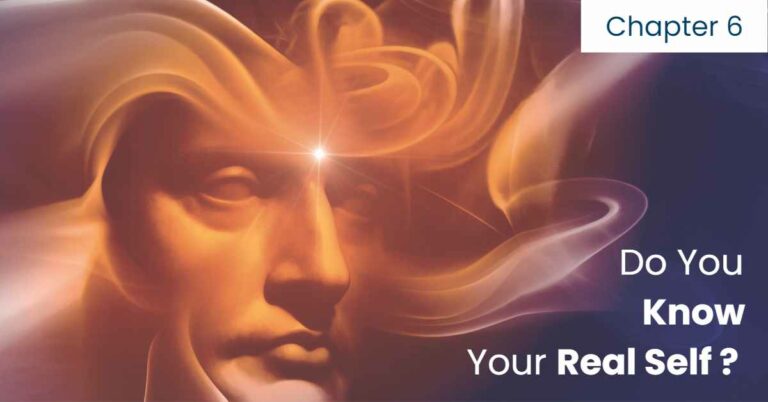
Chapter 6 Consciousness or Self and Some Systems of Psychology Earlier, in other chapters, we have discussed Conscious-ness with reference to Science, some systems of
Start your day with a breeze of positivity and stay motivated with these daily affirmations
After Clicking on Join, You will be redirected to Whatsapp Community to receive daily message. Your identitiy will be secured and no group member will know about another group member who have joined.